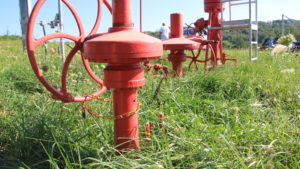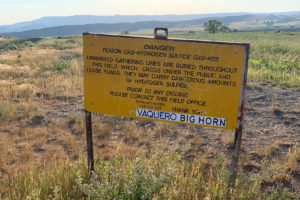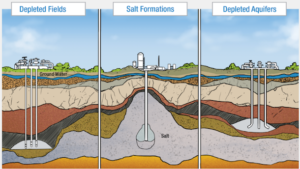Salt caverns account for about 10% of gas storage capacity nationwide, mostly in the South and East. Storage occurs after the excavation of naturally occurring salt domes, which are deep and narrow, or salt beds, which are wide and shallow.
Salt caverns account for most new gas storage fields built since 2007, as well as a growing proportion of gas withdrawn for consumption on a daily basis.
If salt caverns are located in more permeable rock formations, gas can migrate out and cause explosions. Salt caverns can also be structurally unsound and collapse, resulting in sinkholes and risks to water resources.
For More Information
- Energy Information Agency The Basics of Underground Natural Gas Storage





